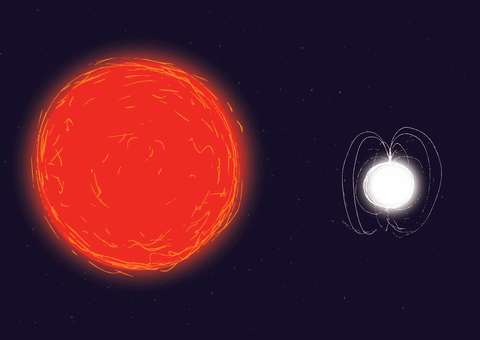Sunday Serendipity
By Jace, a Trail Mix Contributor
A perfect work for springing ahead. Mozart like we seldom hear him.
Enjoy the music but most of all enjoy your day.
More Posts by Jace
A break from the mundane
By Whskyjack, a Trail Mix Contributor
Or, how do they do this?
Some days we just need a break from the news about idiots and their mistresses. Thank your favorite deity. We have science and the real wonders in astronomy
I just read this article and it made my day. I hope you enjoy it too. Beats the hell out of anything Donald Trump tweeted, just sayin’ …
Red giant brings its companion star back to life
There’s some adage out there about helping out your neighbor, right? Well, a red giant star was recently spotted lending more than just a cup of flour to its companion neutron star — it blasted it with winds that nourished the dead star back to life in a burst of X-ray light …
Stars with masses ranging from the size of the Sun to eight times that mass turn into red giants toward the end of their life. As they age, their outer layers are slowly pushed away from the star’s center by solar winds traveling at a few hundred kilometers per second. Over time, the outer layers can expand by millions of kilometers.
Rather than floating off into no-man’s-land like they normally would, the winds from the red giant were captured by its neighboring neutron star, which flared up in X-rays as it began accreting them …
Neutron stars typically develop when stars eight to 30 times more massive than the Sun run out of fuel and detonate in a supernova, leaving a small but incredibly massive spinning core behind. With masses of one and a half times that of the Sun squeezed into a core only about 6 miles (10 kilometers) across, neutron stars are some of the densest objects in the universe.
Neutron stars also exhibit a powerful magnetic field in the object’s early years, which is thought to fade significantly over time. When this particular neutron star’s magnetic field was measured, it was found to be quite strong, hinting that it’s still relatively young. However, its red giant companion is much older, leading researchers to wonder how the system has evolved to this point. One answer could be mass transfer, which can occur in close binary systems when material from one star is pulled in by or expands out past the other.
“These objects are puzzling,” Enrico said. “It might be that either the neutron star magnetic field does not decay substantially with time after all, or the neutron star actually formed later in the history of the binary system. That would mean it collapsed from a white dwarf into a neutron star as a result of feeding off the red giant over a long time, rather than becoming a neutron star as a result of a more traditional supernova explosion of a short-lived massive star.”
More Posts by Whskyjack
…….




